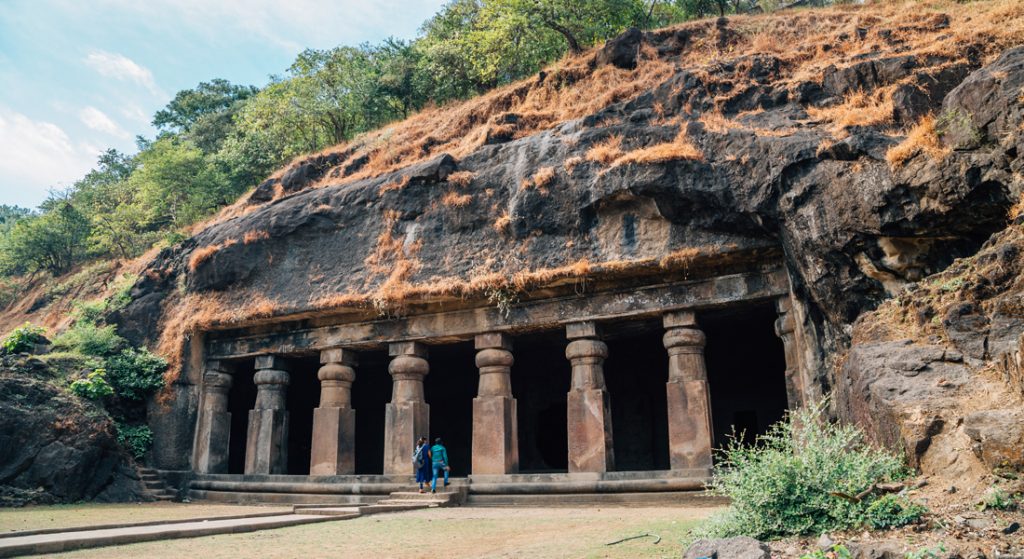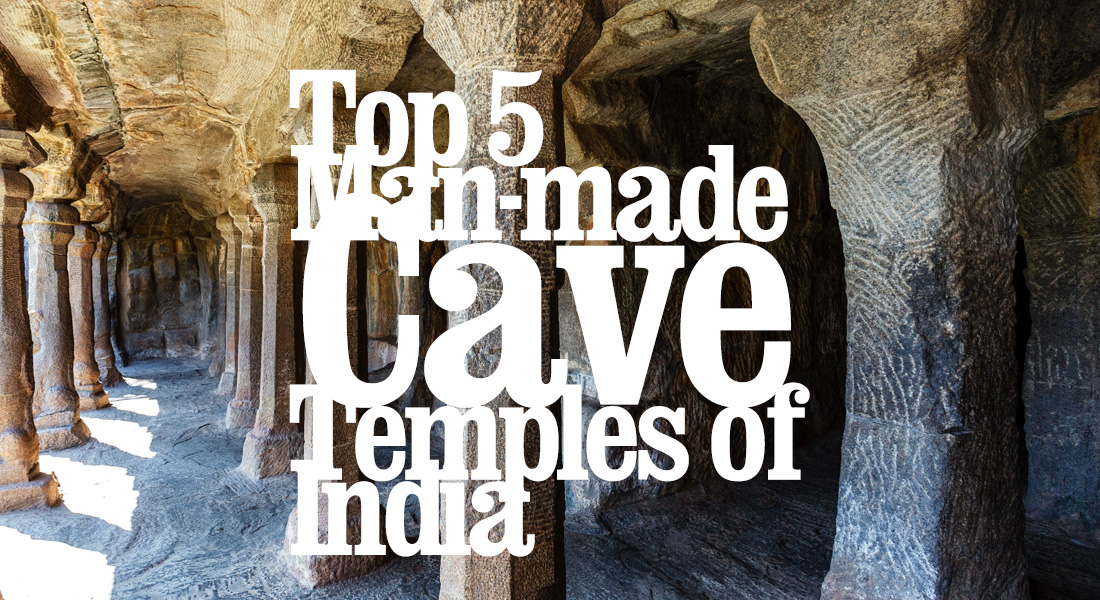
Top 5 Man-made Cave Temples of India
Ellora Cave Temples, Maharashtra: Built over a large area there are over 100 caves excavated out of which only 34 are earmarked for public view. Of these 34, cave 16 houses the most magnificent temple one could ever even imagine, the Kailash temple. Carved starting from the top it is a masterpiece. The site was listed as a UNESCO World Heritage Site in the year 1983. Carved over a period of 400 years from the 6th century to the 10th century, the caves depict all three ancient Indic religions of India namely, Hinduism, Buddhism, and Jainism. The majority of the caves were carved out during the reign of the Rashtrakuta dynasty, with the king named Krishna I, being the creator of the Kailash temple. Ellora obviously takes the top spot among all rock cut man made cave temples of India.
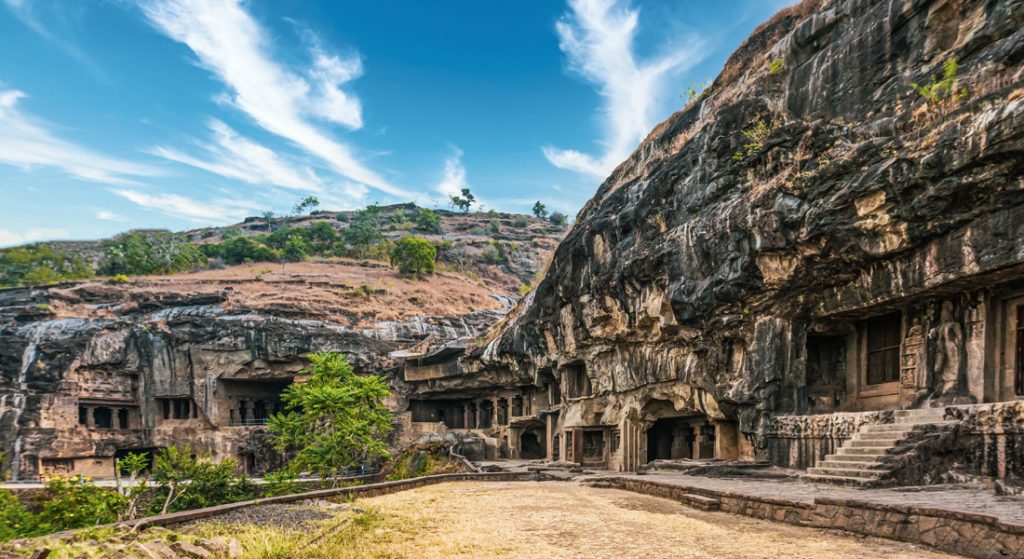
Ajanta Cave Temples, Maharashtra: It is a cluster of 30 rock cut temples located on the banks of Waghora river on higher grounds overlooking the river. The caves are carved out of the surface of the rock face in a horseshoe shape at the spot where the river takes a bend providing a great view from the opposite bank. Historians have identified 2 sets of caves here with the first set belonging to a period starting from the 2nd century BCE to the next 300 years and the second set belonging to the timeline beginning from the 5th century to the next 300 years. All the caves belong to the Buddhist religion, with motifs, idols, statues, and paintings of Buddha and Buddhism. There are worship caves, residential caves (vihara), chaityas, and stupa caves. This group of caves was listed as a UNESCO World Heritage Site in 1983.
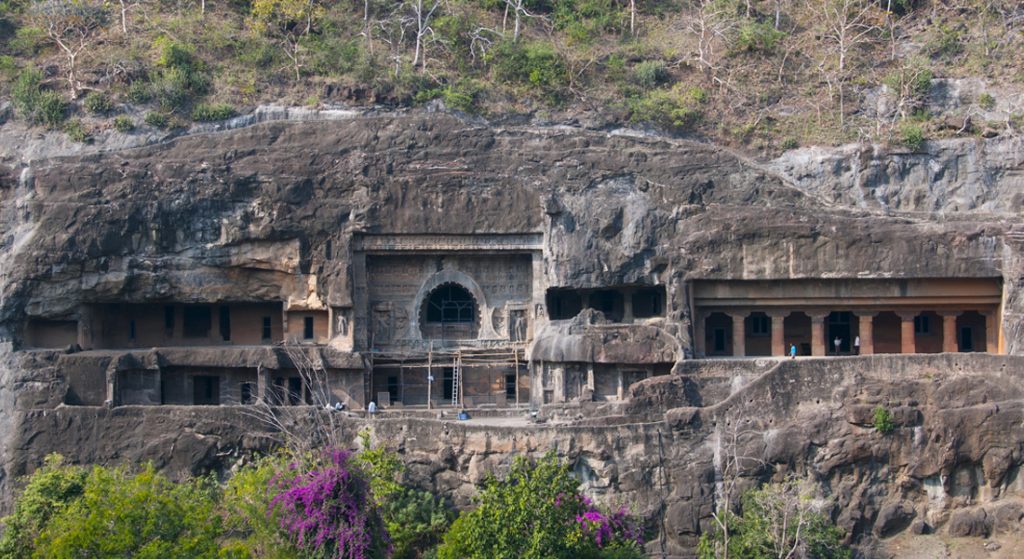
Badami Cave Temples, Karnataka: Located in the Malaprabha Valley, this is a cluster of four caves carved out of the side of these hills. The temples represent the unique architecture of the Badami Chalukyas, who ruled from Vatapi (the ancient name of Badami). Built over a period of about 200 years, starting from the 6th century, three of these temples are dedicated to Hinduism and the fourth to Jainism. Overlooking the fort and the temples on the hill in the opposite direction and a large man made lake in between the two hills, these cave temples depict some of the best and most artistic relief sculptures, of which the Nataraja sculpture stands out. During recent years, some more caves have been discovered near the main cluster of caves. These new caves are stand alone ones and depict Hinduism.
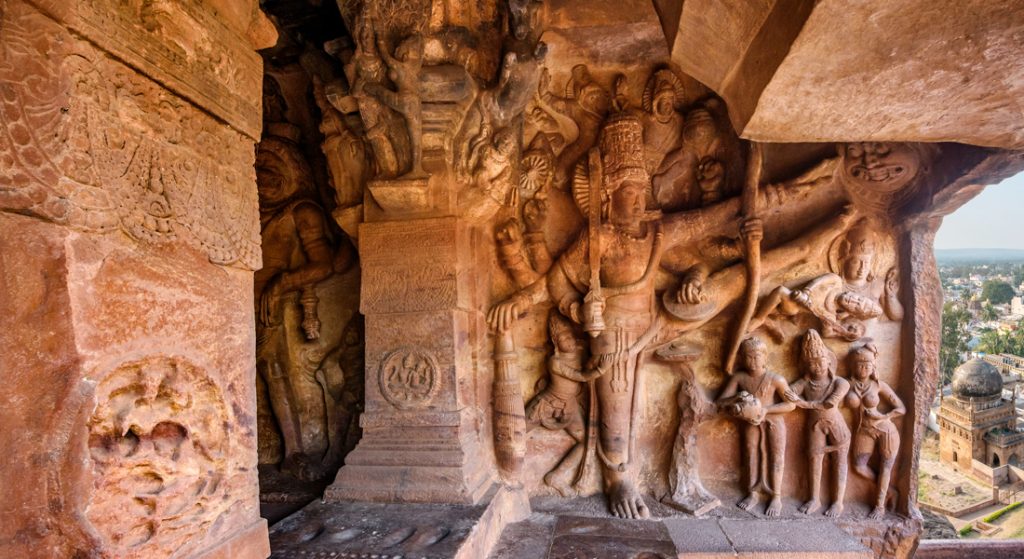
Udayagiri Khandagiri Caves, Odisha: Located near the capital city of Odisha state, Bhubaneshwar, there are 33 caves located on two opposing hills named Udayagiri and Khandagiri. Udayagiri is home to 18 caves and Khandagiri has 15. The state tourism department claims that there are a total of 117 caves in these mountains. Built during the 2nd century, the caves served as prayer halls and residential halls for the Jain monks. The beautiful carvings on the cave walls showcase the ancient lifestyle and society prevalent during those days. It is one of the must see places according to the Archaeological Survey of India.
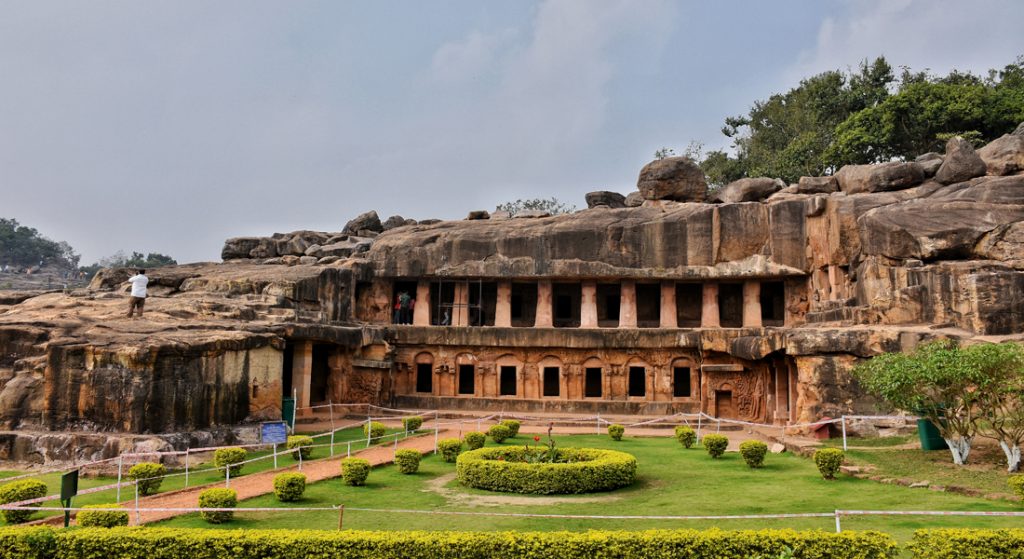
Elephanta Caves, Maharashtra: Located on an island off the coast of Mumbai, this UNESCO World Heritage Site is home to a series of caves of which 5 depict Hinduism and 2 Buddhism. The Hindu caves mostly belong to Bhagavan Shiva and have some amazing relief sculptures that include Nataraja and Sadashiva. The caves are believed to be carved during the timeline of the 5th to the 6th centuries.
